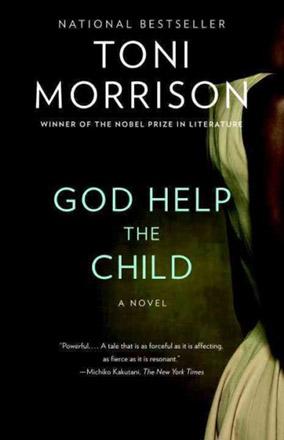You are here
Skin privileges?
Aug 06,2017 - Last updated at Aug 06,2017

God Help the Child
Toni Morrison
New York: Vintage Books, 2016
Pp. 178
Nobel Prize-winning author Toni Morrison is perhaps the US’s greatest living writer. Each of her previous ten novels chronicles the experience of a particular group of African-Americans from slave times up through the 20th century, with plots showing the immeasurable damage inflicted by racism, but also how people built their lives and communities despite it. Morrison is among those writers and scholars who go way beyond recording the abuses of discrimination, to dissect race as a false construct. In her eleventh novel, “God Help the Child”, the protagonist and plot demolish the idea that skin colour is immutably linked to certain attributes.
This is the first of Morrison’s novels to be set in the present, and the story literally explodes with an unforgiving harshness reminiscent of her first book, “The Bluest Eye”. It revisits the latter’s theme of how racism unleashes child abuse, but this time the damage seems reversible, and the abuse is colour-blind, a generalised social ill. Unlike most of Morrison’s other books, “God Help the Child” includes quite a few white characters, positive and negative.
The birth of the main character, Lula Ann Bridewell, is a shock to her parents because she is so dark, whereas they are light-skinned. Her mother raises her with a heavy, unloving hand on the pretext of keeping her out of the trouble she anticipates the girl’s blue-black skin will cause in white-dominated society. Morrison lets the mother defend her meanness by narrating several chapters, justifying the twisted logic of “skin privileges”. Belatedly, she realises, “What you do to children matters. And they might never forget,” thus voicing a main theme of the novel. (p. 43)
But she’s not the only guilty one; black or white, there are few innocents in this story. Despite the heaviness of the topic, Morrison plays with her characters, chuckling at their follies, sympathising with their weaknesses, nurturing their strengths, and indicting their wrongs. One feels she loves them, or some of them at least.
Most of the story is told in first-person narrative, which makes the sometimes over-the-top things that occur seem totally credible. Perhaps Morrison is saying that people’s attitudes, imaginings and fears can have just as real an impact as physical events. Four other female voices (including that of a convicted child abuser) join the mother, going back and forth in time, to show the long-term effects of mistreating children. In contrast, the story of the main male character is told in third person.
After finishing high school, Lula Ann leaves home and hometown, and reinvents herself; she changes her name to Bride, embarks on a successful career and discovers that black is beautiful and she is beautiful. Her newly acquired self-esteem seems to make everything possible. Recalling the cruelty of white children in school, and her mother’s admonitions not to fight back, she concludes, “So I let the name-calling, the bullying travel like poison, like lethal viruses through my veins, with no antibiotic available. Which, actually, was a good thing now that I think of it, because I built up immunity so tough that not being a ‘nigger girl’ was all I needed to win. I became a deep dark beauty who doesn’t need Botox for kissable lips or tanning spas to hide a deathlike pallor”. (p. 57)
For a while, Bride leads a charmed life and finds the perfect man, but when he suddenly disappears for unclear reasons, she learns the limits of physical beauty and starts to revert to her little-girl, scared, miserable self: “there was nothing in the world left to do but stand up for herself finally and confront the first man she had bared her soul to.” (p. 79)
Searching for him, Bride incurs new mishaps but also meets new people who offer alternative paths to love and healing.
With wit, compassion and insight, Morrison tells an engrossing and deeply meaningful story that perches on the cutting edge of literature enriched by social commentary. The book is a joy to read due to her uncanny ability to describe a scene — beautiful or shocking, to nail down human emotions and motives in a few words, and to create complex characters who will be long remembered. In “God Help the child”, she not only addresses child abuse and the persistence of racism, but touches the raw nerve of one of the US’s greatest contemporary paradoxes: It’s hip to be black in the fashion and entertainment world, yet people of colour remain more likely to be murdered or incarcerated. Still, despite not underestimating adverse conditions, the story holds out hope: people can make what they want of themselves.
Sally Bland
Related Articles
The IlluminatorBrenda Rickman VantreaseNew York: St. Martin’s Griffin, 2005Pp.
The Orchard of Lost SoulsNadifa MohamedUK: Simon & Schuster, 2014Pp.
The Valley of AmazementAmy TanNew York: HarperCollins, 2013Pp.
















